football legend Pelé
Pelé
Pelé, born Edson Arantes do Nascimento, on 23 October 1940 in Três Corações, Minas Gerais, was the elder of two siblings. His parents, Fluminense footballer Dondinho and Celeste Arantes, initially named him "Edson." However, a typo on his birth certificate led to the name "Edison." Originally nicknamed "Dico" by his family, he received the nickname "Pelé" during school days, possibly after mispronouncing the name of his favorite player, Vasco da Gama goalkeeper Bilé. In his 2006 autobiography, Pelé admitted not knowing the meaning of the name, and it holds no significance in Portuguese.
Pelé grew up in poverty in Bauru, São Paulo. He worked in tea shops to earn extra money. His father taught him to play, and due to financial constraints, he played with improvised footballs like a sock stuffed with newspaper or a grapefruit. In his youth, Pelé played for various amateur teams, including Sete de Setembro, Canto do Rio, São Paulinho, and Ameriquinha. Coached by Waldemar de Brito, he led Bauru Atlético Clube juniors to two São Paulo state youth championships. In his mid-teens, Pelé played for the indoor football team Radium, winning championships in the emerging futsal competitions.
Pelé emphasized the challenges of futsal, noting its faster pace compared to football on grass and the need for quick thinking due to close player proximity. He credited futsal for enhancing his on-the-spot decision-making. At 14, Pelé's participation in futsal allowed him to compete with adults. Despite initial reservations about his age in a tournament, he emerged as the top scorer with 14 or 15 goals, instilling in him confidence and fearlessness in the face of challenges.
In 1956, Pelé's mentor, de Brito, brought him to Santos FC for a trial, boldly declaring to the club's directors that the 15-year-old would become "the greatest football player in the world." Pelé's skill during the trial impressed Santos coach Lula, leading to the signing of a professional contract in June 1956. Pelé's debut for the senior team occurred on 7 September 1956, at the age of 15, against Corinthians de Santo André. He delivered an outstanding performance, contributing to a 7–1 victory and scoring the first goal of his prolific career during the match.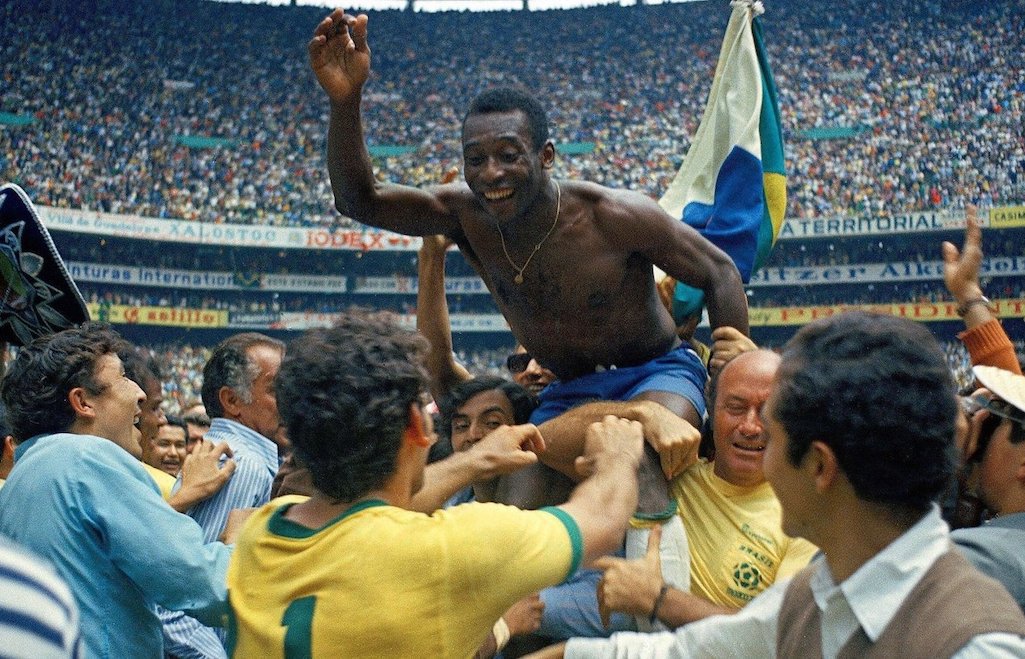
In the 1957 season, Pelé earned a starting position in Santos FC's first team and, at just 16, emerged as the league's top scorer. Within ten months of turning professional, he received a call-up to join the Brazil national team. Following the 1958 and 1962 World Cups, prestigious European clubs like Real Madrid, Juventus, and Manchester United attempted unsuccessfully to sign him. Despite Inter Milan securing a regular contract in 1958, the agreement was annulled due to protests from Santos's Brazilian fans. Valencia CF also negotiated for Pelé's transfer after the 1958 World Cup, but Santos refused to release him following his outstanding tournament performances. In 1961, the Brazilian government, led by President Jânio Quadros, declared Pelé an "official national treasure" to prevent him from being transferred abroad.
Pelé secured his first major title with Santos in 1958, winning the Campeonato Paulista and finishing as the tournament's top scorer with an impressive 58 goals, a record that still stands. The following year, he played a pivotal role in Santos' first victory in the Torneio Rio-São Paulo, defeating Vasco da Gama 3–0. Despite this success, Santos couldn't retain the Paulista title. In 1960, Pelé scored 33 goals, helping Santos reclaim the Campeonato Paulista trophy but falling short in the Rio-São Paulo tournament, finishing in 8th place. The 1960 season saw Pelé scoring 47 goals and guiding Santos to another Campeonato Paulista triumph. Santos also won the Taça Brasil, with Pelé emerging as the tournament's top scorer with nine goals. This victory earned Santos a spot in the Copa Libertadores, the prestigious club tournament in the Western hemisphere.
In 1962, Santos embarked on their most successful Copa Libertadores campaign. Seeded in Group One with Cerro Porteño and Deportivo Municipal Bolivia, they won every group match except for a 1–1 draw with Cerro. Santos defeated Universidad Católica in the semi-finals and faced defending champions Peñarol in the finals. Pelé scored twice in the playoff match, securing the first title for a Brazilian club. Pelé finished as the second top scorer of the competition with four goals. In the same year, Santos successfully defended the Campeonato Paulista (Pelé contributing 37 goals) and the Taça Brasil (Pelé scoring four goals in the final series against Botafogo). Santos also clinched the 1962 Intercontinental Cup against Benfica, with Pelé delivering a stellar performance, including a hat-trick in Lisbon, leading Santos to a 5–2 victory.
Pelé considers his most memorable goal to be in a Campeonato Paulista match against São Paulo rival Clube Atlético Juventus on 2 August 1959 at Estádio Rua Javari. Unfortunately, there's no video footage of this match, so Pelé requested a computer animation of the specific goal. Another notable goal was the "gol de placa" (goal worthy of a plaque) in March 1961 against Fluminense at the Maracanã. Pelé received the ball at the edge of his own penalty area, navigated the entire field, evading opposition players with feints, and scored beyond the goalkeeper. This goal earned him a plaque dedicated to "the most beautiful goal in the history of the Maracanã."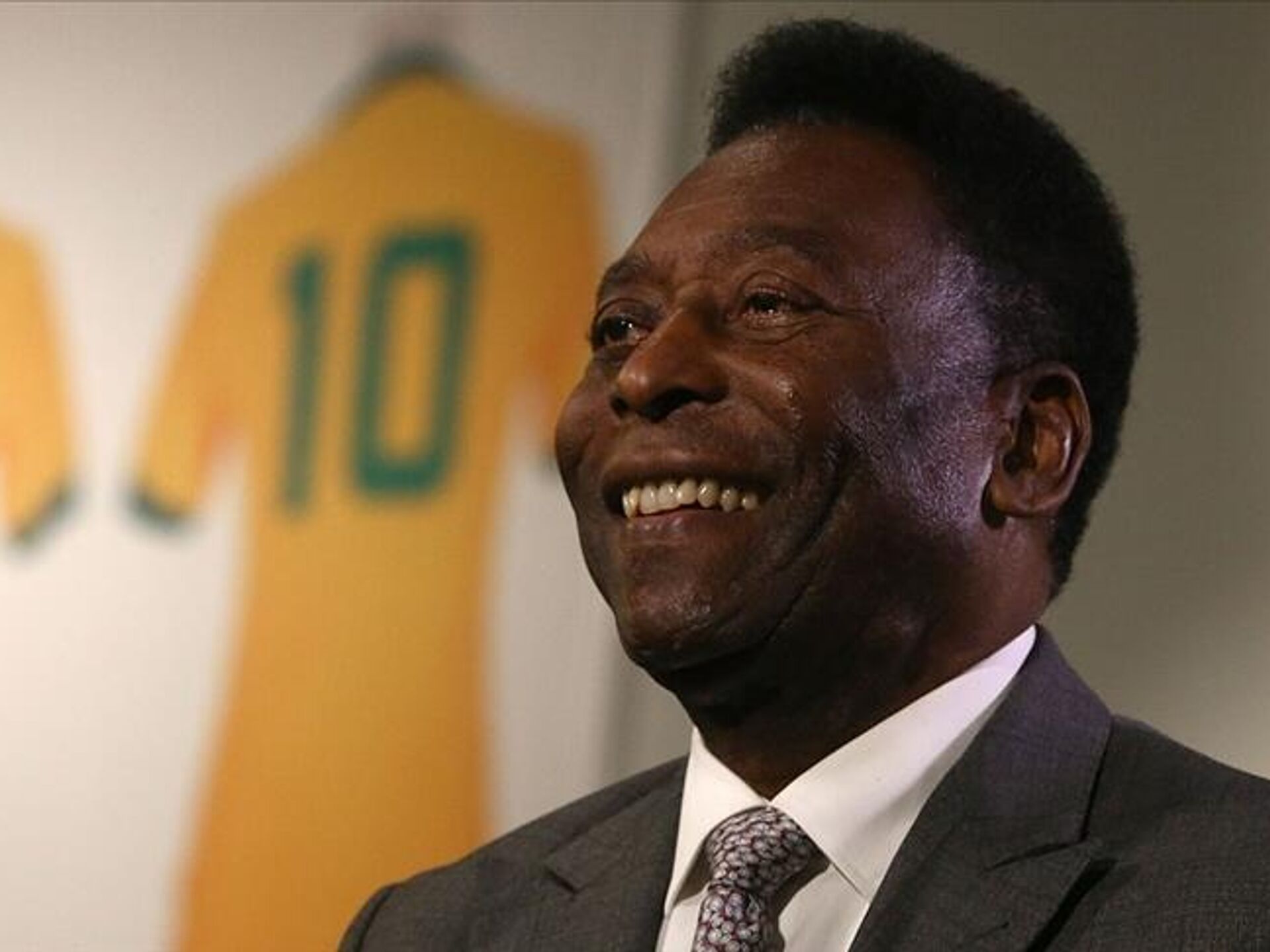
As the defending champions, Santos automatically qualified for the semi-final stage of the 1963 Copa Libertadores. Nicknamed the "balé branco" (white ballet), Santos retained the title by defeating Botafogo and Boca Juniors. In the semi-finals, Pelé's last-minute goal against Botafogo in the first leg helped secure a 1–1 draw. In the second leg, Pelé scored a hat-trick at the Estádio do Maracanã, leading Santos to a 4–0 victory. In the finals against Boca Juniors, Santos won 3–2 in the first leg and 2–1 in La Bombonera, with another goal from Pelé, making Santos the first Brazilian team to lift the Copa Libertadores in Argentine soil. Pelé finished the tournament with five goals. Although Santos lost the Campeonato Paulista, they won the Rio-São Paulo tournament, defeating Flamengo 3–0 in the final, with Pelé scoring a goal. Pelé also helped Santos retain the Intercontinental Cup and the Taça Brasil against AC Milan and Bahia, respectively.
In the 1964 Copa Libertadores, Santos suffered defeat in both legs of the semi-finals against Independiente. Despite this, Santos won the Campeonato Paulista with Pelé scoring 34 goals. The club shared the Rio-São Paulo title with Botafogo and secured the Taça Brasil for the fourth consecutive year. In the 1965 Copa Libertadores, Santos reached the semi-finals and faced Peñarol in a rematch of the 1962 final. After two matches, a playoff was needed to break the tie. However, Peñarol emerged victorious, eliminating Santos with a 2–1 result. Pelé, nonetheless, finished as the top scorer of the tournament with eight goals.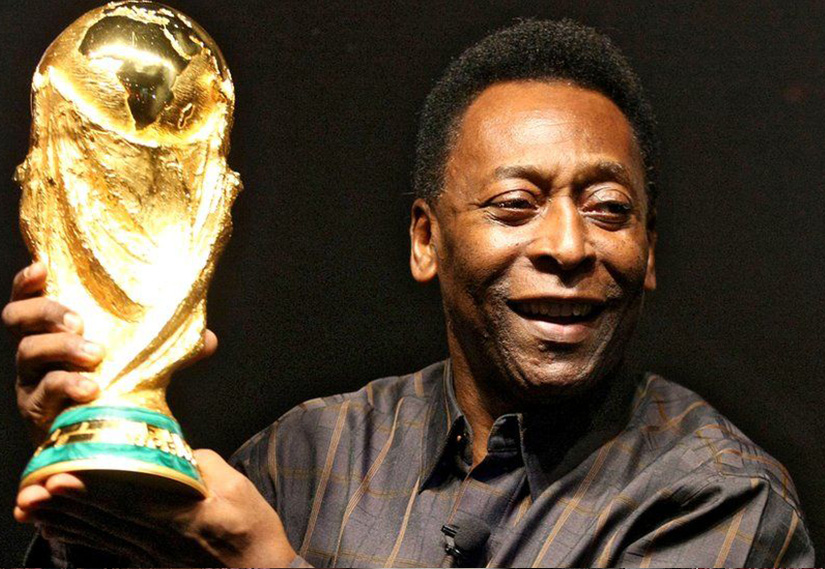
In December 1965, Santos won the Taça Brasil, securing their fifth consecutive Brazilian league title, with Pelé scoring the last goal in the final series. In 1966, Santos failed to retain the Taça Brasil as Pelé's goals were not enough to prevent a 9–4 defeat by Cruzeiro (led by Tostão) in the final series. However, the club did win the Campeonato Paulista in 1967, 1968, and 1969. On 19 November 1969, Pelé scored his 1,000th goal in all competitions, in a highly anticipated moment in Brazil. The goal, dubbed "O Milésimo" (The Thousandth), occurred in a match against Vasco da Gama when Pelé scored from a penalty kick at the Maracanã Stadium.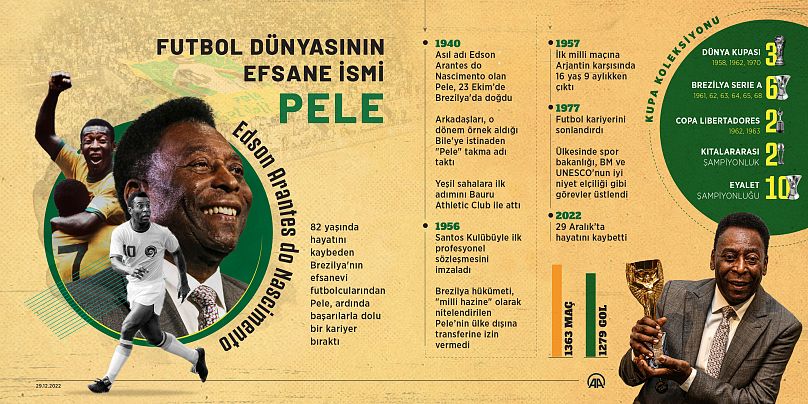
After the 1974 season, his 19th with Santos, Pelé retired from Brazilian club football, although he occasionally played for Santos in official competitive matches. A year later, he came out of semi-retirement to sign with the New York Cosmos of the North American Soccer League (NASL) for the 1975 season.At a chaotic press conference at New York's 21 Club, the Cosmos unveiled Pelé. John O'Reilly, the club's media spokesman, stated, "We had superstars in the United States, but nothing at the level of Pelé. Everyone wanted to touch him, shake his hand, get a photo with him." Though well past his prime at this point, Pelé was credited with significantly increasing public awareness and interest in the sport in the US.During his first public appearance in Boston, he was injured by a crowd of fans who had surrounded him and was evacuated on a stretcher.
Pelé made his debut for the Cosmos on 15 June 1975 against the Dallas Tornado at Downing Stadium, scoring one goal in a 2–2 draw. Pelé opened the door for many other stars to play in North America. Giorgio Chinaglia followed him to the Cosmos, then Franz Beckenbauer and his former Santos teammate Carlos Alberto. Over the next few years, other players came to the league, including Johan Cruyff, Eusébio, Bobby Moore, George Best, and Gordon Banks.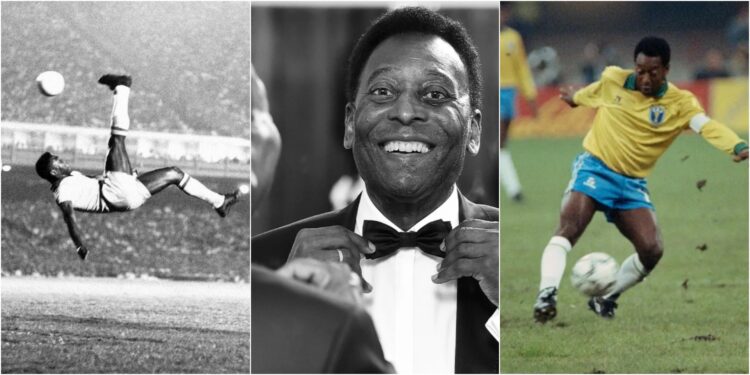
In 1975, one week before the Lebanese Civil War, Pelé played a friendly game for the Lebanese club Nejmeh against a team of Lebanese Premier League stars, scoring two goals, which were not included in his official tally. On the day of the game, 40,000 spectators were at the stadium from early morning to watch the match.
Pelé led the Cosmos to the 1977 Soccer Bowl, in his third and final season with the club.In June 1977, the Cosmos attracted an NASL record 62,394 fans to Giants Stadium for a 3–0 victory over the Tampa Bay Rowdies, with a 37-year-old Pelé scoring a hat-trick. In the first leg of the quarter-finals, they attracted a US record crowd of 77,891 for what turned into an 8–3 rout of the Fort Lauderdale Strikers at Giants Stadium. In the second leg of the semi-finals against the Rochester Lancers, the Cosmos won 4–1. Pelé finished his official playing career on 28 August 1977, leading the New York Cosmos to their second Soccer Bowl title with a 2–1 win over the Seattle Sounders at Civic Stadium in Portland, Oregon.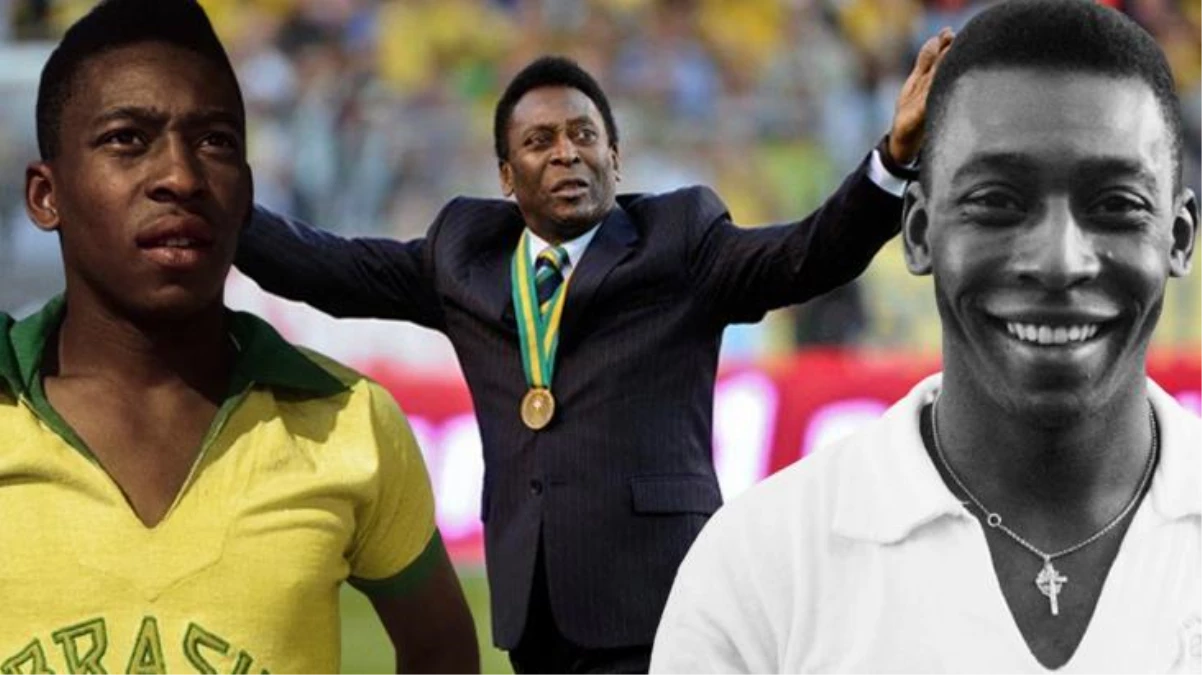
Pelé arrived in Sweden sidelined by a knee injury, but upon his return from the treatment room, his colleagues stood together and insisted upon his selection.His first match was against the USSR in the third match of the first round of the 1958 FIFA World Cup, where he provided the assist for Vavá's second goal.At the time, he was the youngest player ever to participate in the World Cup.In the semi-final against France, with Brazil leading 2–1 at halftime, Pelé scored a hat-trick, becoming the youngest player in World Cup history to do so.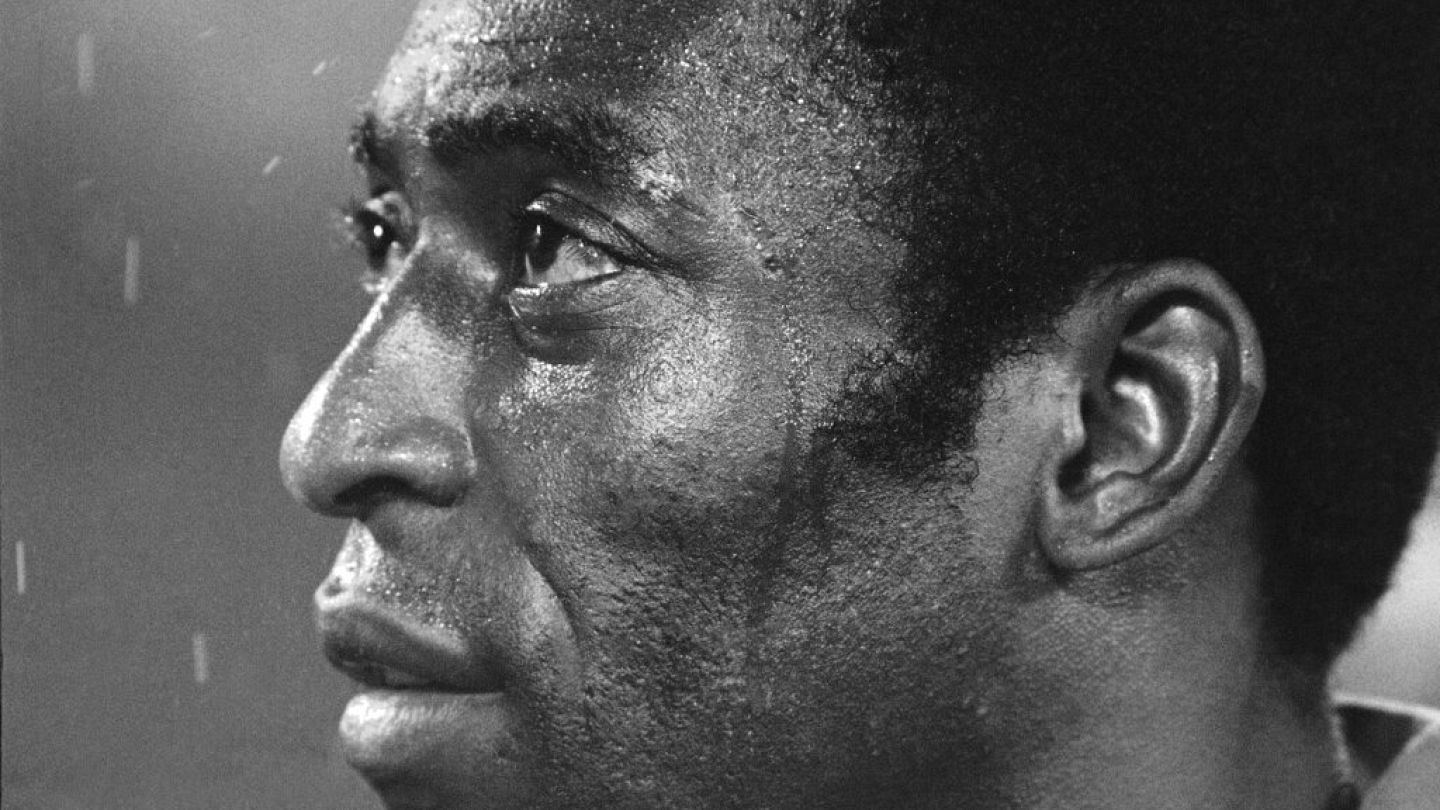
On 1 October 1977, Pelé closed out his career in an exhibition match between the Cosmos and Santos. The match was played in front of a sold-out crowd at Giants Stadium and was televised in the US on ABC's Wide World of Sports as well as throughout the world. Pelé's father and wife both attended the match, as well as Muhammad Ali and Bobby Moore.Delivering a message to the audience before the start of the game"Love is more important than what we can take in life"Pelé played the first half with the Cosmos, the second with Santos. The game ended with the Cosmos winning 2–1, with Pelé scoring a 30-yard free-kick for the Cosmos in what was the final goal of his career. During the second half, it started to rain, prompting a Brazilian newspaper to come out with the headline the following day: "Even The Sky Was Crying."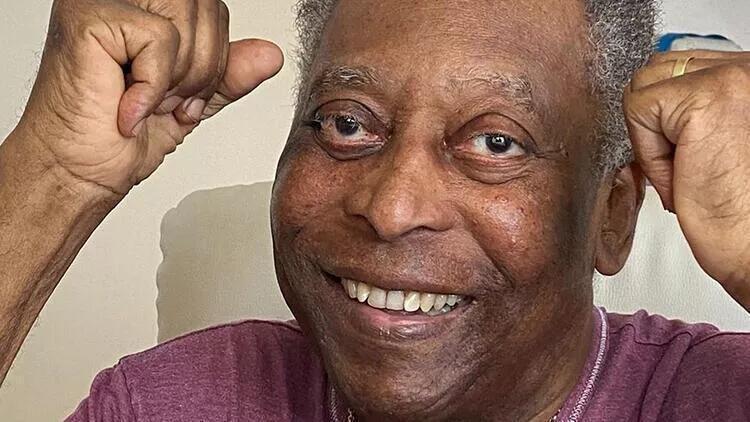
Pelé arrived in Sweden sidelined by a knee injury but on his return from the treatment room, his colleagues stood together and insisted upon his selection. His first match was against the USSR in the third match of the first round of the 1958 FIFA World Cup, where he gave the assist to Vavá's second goal. At the time, he was the youngest player ever to participate in the World Cup.Against France in the semi-final, Brazil was leading 2–1 at halftime, and then Pelé scored a hat-trick, becoming the youngest player in World Cup history to do so.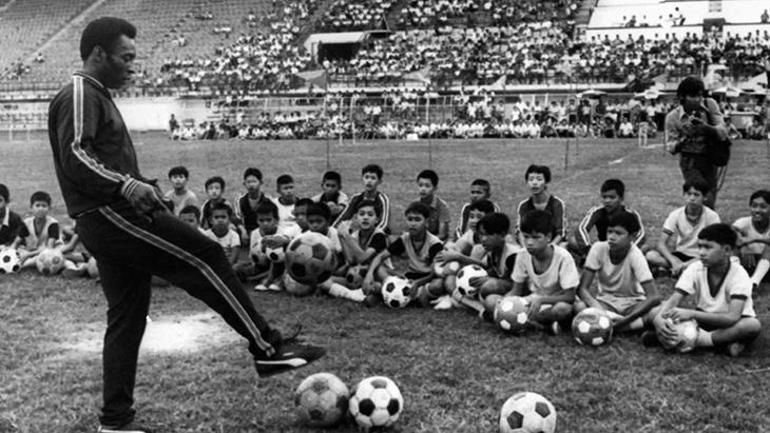
When the 1962 World Cup started, Pelé was considered the best player in the world.In the first match of the 1962 World Cup in Chile, against Mexico, Pelé assisted the first goal and then scored the second one, after a run past four defenders, to go up 2–0. He got injured in the next game while attempting a long-range shot against Czechoslovakia.This injury kept him out of the rest of the tournament, forcing coach Aymoré Moreira to make his only lineup change of the tournament. The substitute was Amarildo, who performed well for the remainder of the tournament. However, it was Garrincha who would take the leading role and carry Brazil to their second World Cup title, beating Czechoslovakia in the final in Santiago. At the time, only players who appeared in the final were eligible for a medal before FIFA regulations were changed in 1978 to include the entire squad, with Pelé receiving his winner's medal retroactively in 2007.
Pelé was the most famous footballer in the world during the 1966 World Cup in England, and Brazil fielded some world champions like Garrincha, Gilmar, and Djalma Santos, with the addition of other stars like Jairzinho, Tostão, and Gérson, leading to high expectations for them.Brazil was eliminated in the first round, playing only three matches. The World Cup was marked, among other things, by brutal fouls on Pelé that left him injured by Bulgarian and Portuguese defenders.Pelé scored the first goal from a free kick against Bulgaria, becoming the first player to score in three successive FIFA World Cups, but due to his injury, a result of persistent fouling by the Bulgarians, he missed the second game against Hungary. His coach stated that after the first game, he felt 'every team will take care of him in the same manner.' Brazil lost that game, and Pelé, although still recovering, was brought back for the last crucial match against Portugal at Goodison Park in Liverpool by the Brazilian coach Vicente Feola. Feola changed the entire defense, including the goalkeeper, while in midfield, he returned to the formation of the first match. 
Pelé was called to the national team in early 1969. Initially, he refused the call, but later accepted and played in six World Cup qualifying matches, scoring six goals. The 1970 World Cup in Mexico was expected to be Pelé's last. Brazil's squad for the tournament featured major changes from the 1966 squad, with players like Garrincha, Nilton Santos, Valdir Pereira, Djalma Santos, and Gilmar having already retired. However, Brazil's 1970 World Cup squad, including players like Pelé, Rivellino, Jairzinho, Gérson, Carlos Alberto Torres, Tostão, and Clodoaldo, is often considered to be the greatest football team in history.
The front five of Jairzinho, Pelé, Gerson, Tostão, and Rivellino collectively created an attacking momentum, with Pelé playing a central role in Brazil's journey to the final.All of Brazil's matches in the tournament (except the final) were played in Guadalajara. In the first match against Czechoslovakia, Pelé gave Brazil a 2–1 lead by controlling Gerson's 50-yard pass with his chest and then scoring. In this match, Pelé attempted to lob goalkeeper Ivo Viktor from the halfway line, narrowly missing the Czechoslovak goal. Brazil went on to win the match, 4–1. In the first half of the match against England, Pelé nearly scored with a header that was saved by the England goalkeeper Gordon Banks. Pelé recalled that he was already shouting "Goal" when he headed the ball. This moment is often referred to as the "save of the century". In the second half, he controlled a cross from Tostão before flicking the ball to Jairzinho, who scored the only goal.
Against Romania, Pelé scored two goals, including a 20-yard bending free-kick, contributing to Brazil's 3–2 victory. In the quarter-final against Peru, Brazil won 4–2, with Pelé assisting Tostão for Brazil's third goal. In the semi-final against Uruguay, Jairzinho put Brazil ahead 2–1, and Pelé assisted Rivellino for the 3–1 lead. During this match, Pelé executed one of his most famous plays. Tostão passed the ball for Pelé to collect, and Uruguay's goalkeeper, Ladislao Mazurkiewicz, rushed off his line to intercept. However, Pelé outsmarted Mazurkiewicz with a feint, not touching the ball, causing it to roll to the goalkeeper's left, while Pelé went to the goalkeeper's right. Pelé then ran around the goalkeeper to retrieve the ball, took a shot while turning towards the goal, but turned in excess, and the ball drifted just wide of the far post.
References
- "Pelé, who rose from a Brazilian slum to become the world's greatest soccer player, dies at 82". Los Angeles Times. 29 December 2022. Archived from the original on 29 December 2022. Retrieved 29 December 2022.
- ^ Jump up to:
- a b "FIFA: Pele, the greatest of them all". FIFA. 28 June 2012. Archived from the original on 9 January 2021. Retrieved 11 January 2021.
- ^ Luhn, Michele (29 December 2022). "Pelé, Brazilian soccer star and the only player to win the World Cup three times, dies at age 82". CNBC. Archived from the original on 12 January 2023. Retrieved 12 January 2023.
- ^ Jump up to:
- a b "Most career goals (football)". Guinness World Records. 7 September 1956. Archived from the original on 24 November 2020. Retrieved 21 July 2017.
- ^ Jump up to:
- a b c "Pelé (Brazilian Athlete)". Encyclopædia Britannica. Archived from the original on 11 July 2018. Retrieved 18 July 2017.
- ^ Jump up to:
- a b c Ronay, Barney (1 January 2021). "Pelé's revolutionary status must survive numbers game against Lionel Messi". The Guardian. Archived from the original on 3 February 2021. Retrieved 3 February 2021.
- ^ Jump up to:
- a b c d Pelé & Fish 1977, p. 18–19.
- ^ "Morreu Zoca, o escudeiro do Rei" [Zoca has died, the King's squire]. santosfc.com.br (in Portuguese). 26 March 2020. Archived from the original on 2 February 2023. Retrieved 2 February 2023.
- ^ Jump up to:
- a b Pelé 2008, p. 14.
- ^ Narcía, Eva. "Un siglo, diez historias" (in Spanish). BBC World Service. Archived from the original on 11 November 2022. Retrieved 21 June 2010.
- ^ "From Edson to Pelé: my changing identity". The Guardian. London. 12 May 2006. Archived from the original on 14 November 2022. Retrieved 1 October 2006.
- ^ Winterman, Denise (4 January 2006). "Taking the Pelé". BBC News. Archived from the original on 23 November 2008. Retrieved 11 January 2023.



































